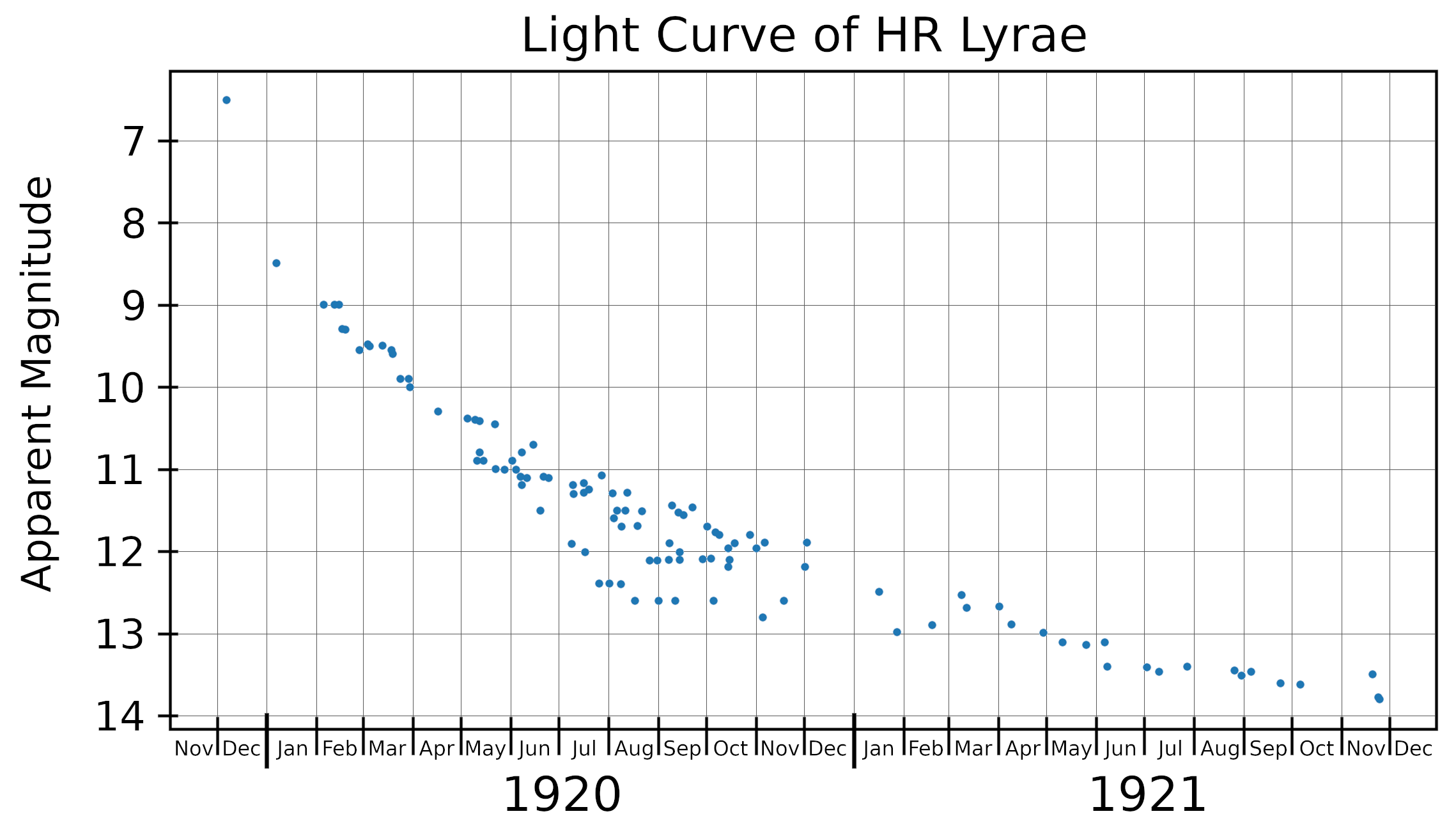HR Lyrae on:
[Wikipedia]
[Google]
[Amazon]
 HR Lyrae or Nova Lyrae 1919 was a
HR Lyrae or Nova Lyrae 1919 was a
 HR Lyrae or Nova Lyrae 1919 was a
HR Lyrae or Nova Lyrae 1919 was a nova
A nova (plural novae or novas) is a transient astronomical event that causes the sudden appearance of a bright, apparently "new" star (hence the name "nova", which is Latin for "new") that slowly fades over weeks or months. Causes of the dramati ...
which occurred in the constellation
A constellation is an area on the celestial sphere in which a group of visible stars forms Asterism (astronomy), a perceived pattern or outline, typically representing an animal, mythological subject, or inanimate object.
The origins of the e ...
Lyra
Lyra (; Latin for lyre, from Greek ''λύρα'') is a small constellation. It is one of the 48 listed by the 2nd century astronomer Ptolemy, and is one of the modern 88 constellations recognized by the International Astronomical Union. Lyra was ...
in 1919. Its discovery was announced by Johanna C. Mackie on 6 December 1919. She discovered it while examining photographic plate
Photographic plates preceded photographic film as a capture medium in photography, and were still used in some communities up until the late 20th century. The light-sensitive emulsion of silver salts was coated on a glass plate, typically thinn ...
s taken at the Harvard College Observatory. The bulletin announcing the discovery (H.C.O. bulletin 705) states "''Between December 4 and 6 it rose rapidly from the sixteenth magnitude or fainter, to a maximum of about 6.5''". It was the first nova ever reported in Lyra, and Mackie was awarded the AAVSO gold medal for her discovery. Its peak magnitude of 6.5 implies that it might have been visible to the naked eye, under ideal conditions.
HR Lyrae's outburst occurred in December 1919, when Lyra was only visible in the early evening for most northern observers. Visibility was even more limited in the first months of 1920, so its light curve near maximum brightness is poorly sampled. But it is very likely that it declined from peak brightness by 3 magnitudes in less than 100 days, making it a "fast" nova. By November 1921 the star had dimmed to 14th magnitude, which is close to its quiescent brightness. It continues to show brightness fluctuations of 1 magnitude or less above its quiescent magnitude with no clear periodicity, as well as dimming (down to 17th magnitude) episodes. Although only one nova event has been seen, there are suggestions based primarily on the light curve that HR Lyrae might be a recurrent nova.
All novae are binary stars, with a "donor" star orbiting a white dwarf
A white dwarf is a stellar core remnant composed mostly of electron-degenerate matter. A white dwarf is very dense: its mass is comparable to the Sun's, while its volume is comparable to the Earth's. A white dwarf's faint luminosity comes fro ...
. The two stars are so close to each other that matter is transferred from the donor to the white dwarf. In the case of HR Lyrae the binary's orbital period is uncertain, but a value of 2.4 hours has been reported. The white dwarf's mass has been estimated to be 0.78±0.15
References
External links
*http://www.britastro.org/vss/obj-18.html *http://astro.corlan.net/stars/LYR/HR-LYR.html *https://web.archive.org/web/20050909054008/http://www.tsm.toyama.toyama.jp/curators/aroom/var/nova/1910.htm {{var-star-stub Novae Lyra (constellation) 1919 in science Lyrae, HR 175268